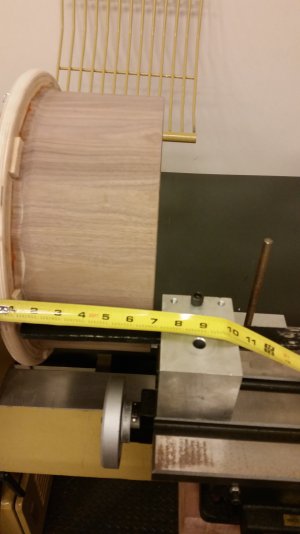- Joined
- Mar 5, 2012
- Messages
- 161
I just purchased the Grizzly cross-slide table shown in this link:
http://www.grizzly.com/products/6-x-18-1-2-Compound-Slide-Table/G8750
I'm using it on a wood lathe and have attached a poor picture. In theory, this set-up should allow me to make a very flat and uniform cut across my workpiece, which is 7" deep. My problem is that the travel is not uniform. Turning the hand wheel, the table veers slightly inward, then back out. The result is a wobble and zig-zag pattern on my part. I initially dismantled the table to removed the packing grease. Nothing appears to be bent.
Wondering if it's possible to make some gib adjustments to fix it. I have almost zero experience. Appreciate any and all thoughts.
Thanks
Jim

http://www.grizzly.com/products/6-x-18-1-2-Compound-Slide-Table/G8750
I'm using it on a wood lathe and have attached a poor picture. In theory, this set-up should allow me to make a very flat and uniform cut across my workpiece, which is 7" deep. My problem is that the travel is not uniform. Turning the hand wheel, the table veers slightly inward, then back out. The result is a wobble and zig-zag pattern on my part. I initially dismantled the table to removed the packing grease. Nothing appears to be bent.
Wondering if it's possible to make some gib adjustments to fix it. I have almost zero experience. Appreciate any and all thoughts.
Thanks
Jim


